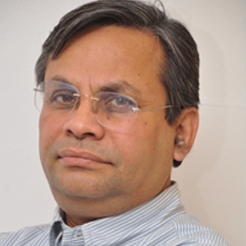Interview with Dipanker Mukherjee, COO, Handygo Technologies

In an interview with tele.net.in, Dipanker Mukherjee, chief operating officer, Handygo Technologies, discusses the various opportunities the Indian VAS space has to offer and what strategy the company will adopt to leverage these and retain an edge over competition. Excerpts…
How do you view the Indian VAS market in terms of business opportunities?
The VAS space is experiencing phenomenal growth, driven by segments such as infotainment, dialer tones, cricket jokes, etc. Moreover, other areas like m-health and m-governance and agriculture hold great potential for VAS players. The success and growth of VAS is dependent on how well these services meet the customer’s requirements.
Going forward, the segment is likely to get a boost, with the government extending budgetary support to encourage the uptake of VAS platforms related to m-health, m-rural and m-governance.
What is the current market size of VAS services in the country? How will 3G and 4G technologies impact this segment?
Currently, the VAS market is worth Rs 180 billion and is expected to grow to
Rs 250 billion by 2015. Expansion of telecom networks and the advent of 3G and 4G will lead a significant increase in the uptake of data services.
The ecosystem supporting VAS is undergoing significant changes. With falling 3G prices and bigger screens with the launch of new mobile devices, opportunities in the VAS space will increase. Critical factors affecting the uptake of these services relate to availability and quality of content.
How does Indian VAS market compare with its global counterparts?
In India, the VAS market is dominated by services such as dialer tones. This is unlike global markets, where utility-based services such as games, music, health and education are more popular. Countries such as Korea and China are big on entertainment but they have also adapted well to public utilities covering health and education.
As a VAS provider, do you offer m-governance initiatives to deliver public services?
We have strong portfolio pertaining to m-governance that provide public services. Another important platform is the m-rural service, which targets farming communities in Bihar, Uttar Pradesh and Maharashtra.
Our focus areas are the rural and agriculture segments. Farmers enjoy receiving uptakes related to weather, mandi rates, and discount bazaars. To simplify the service, we offer updates recorded in 18 languages.
The most critical factor in VAS related to m-governance is the quality of inputs and updates being provided to farmers. The government is making efforts to popularise these utilities. At present, m-governance is fragmented. Kerala has taken the lead in adopting these services, while other states have been slow.
The operator’s support is very critical to increase the uptake of m-rural services in semi-urban areas.
How are you placed vis-à-vis your competitors?
Hungama Mobile, On-mobile and IMI-mobile are big players in VAS. They attract higher revenues compared to other players in the market. The majority of their business comprises of music and dialer tones. They are leading players as they enjoy the support of mobile operators.
What are going to be the key drivers for mobile VAS?
Currently 3G services are priced too high. However, operators are offering unlimited internet packs for as little as Rs 99 a month today. Mobile internet is the new way to access broadband. Currently, we have 100 million internet users and out of that nearly 50 per cent users access internet on their mobiles.
Awareness is going to be another key driver for the growth of VAS in the country. The emphasis has to be on informing and educating people that using VAS-based utility services will be to their advantage. More importantly, one has to ensure that users are comfortable using these services.
What future trends do you expect to witness in the VAS space?
Today, VAS services such as maps have become immensely popular. This level of awareness and adoption needs to be replicated in rural areas as well. Also, India has a long way to go in encouraging the widespread use of utilities in the country. The utility segment has huge business potential and, to enhance uptake, nano technologies available in the labs need to be brought in the country. One has to either make advanced utility services available in the country or import them from abroad.
- Most Viewed
- Most Rated
- Most Shared
- Related Articles
- R.K. Upadhyay, Chairman and MD, BSNL
- Interview with Shashin Devsare, Executiv...
- Interview with Marten Pieters, MD and CE...
- Marten Pieters, Managing Director and Ch...
- B.S. Shantharaju, CEO, Indus Towers
- Views of Sandeep Nair, MD, Emerson Netwo...
- Interview with Samaresh Parida, Director...
- Interview with Himanshu Kapania, Deputy ...
- Interview with J.S. Sarma, Chairman, TRA...
- Views of Dhananjay Pavgi, Principal Cons...






